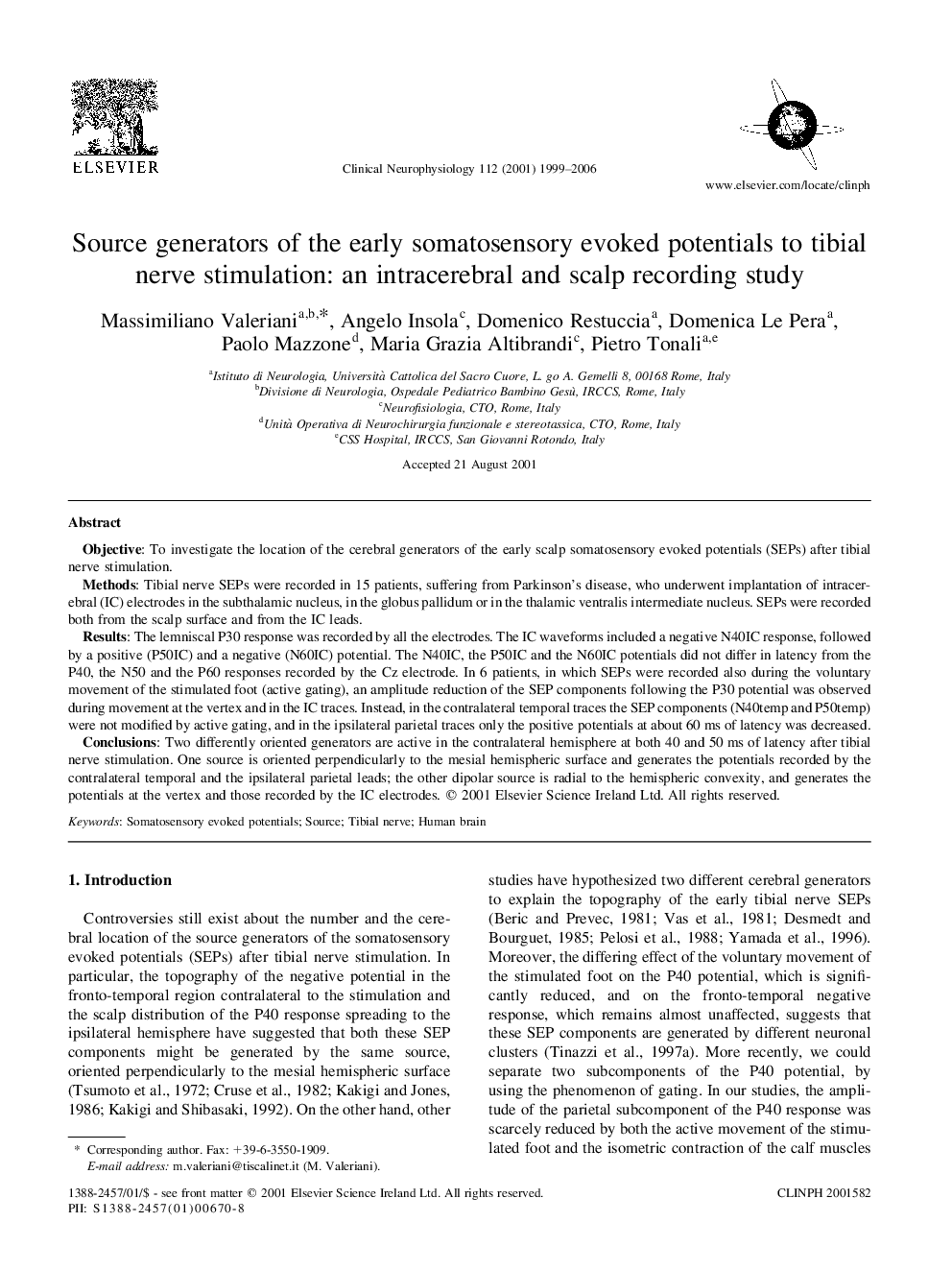| Article ID | Journal | Published Year | Pages | File Type |
|---|---|---|---|---|
| 3049043 | Clinical Neurophysiology | 2006 | 8 Pages |
Objective: To investigate the location of the cerebral generators of the early scalp somatosensory evoked potentials (SEPs) after tibial nerve stimulation.Methods: Tibial nerve SEPs were recorded in 15 patients, suffering from Parkinson's disease, who underwent implantation of intracerebral (IC) electrodes in the subthalamic nucleus, in the globus pallidum or in the thalamic ventralis intermediate nucleus. SEPs were recorded both from the scalp surface and from the IC leads.Results: The lemniscal P30 response was recorded by all the electrodes. The IC waveforms included a negative N40IC response, followed by a positive (P50IC) and a negative (N60IC) potential. The N40IC, the P50IC and the N60IC potentials did not differ in latency from the P40, the N50 and the P60 responses recorded by the Cz electrode. In 6 patients, in which SEPs were recorded also during the voluntary movement of the stimulated foot (active gating), an amplitude reduction of the SEP components following the P30 potential was observed during movement at the vertex and in the IC traces. Instead, in the contralateral temporal traces the SEP components (N40temp and P50temp) were not modified by active gating, and in the ipsilateral parietal traces only the positive potentials at about 60 ms of latency was decreased.Conclusions: Two differently oriented generators are active in the contralateral hemisphere at both 40 and 50 ms of latency after tibial nerve stimulation. One source is oriented perpendicularly to the mesial hemispheric surface and generates the potentials recorded by the contralateral temporal and the ipsilateral parietal leads; the other dipolar source is radial to the hemispheric convexity, and generates the potentials at the vertex and those recorded by the IC electrodes.
